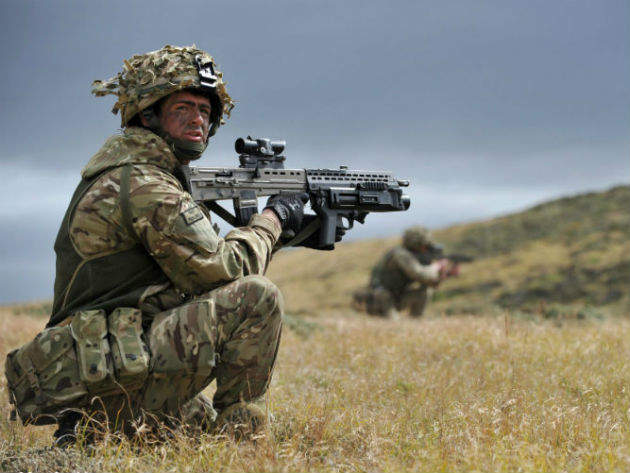

Modern war zones are highly complex. Take Syria and Northern Iraq, for example. They contain a range of factions that are each allied to a number of different overlapping and conflicting causes. Some factions are well-funded, well-trained, state-sponsored and have access to modern weaponry but are still prepared to use unconventional and dirty war tactics.
With warfare also now increasingly taking place in densely populated urban environments, soldiers are highly vulnerable to close-range attack from all directions, including from the ground in the form of buried improvised explosive devices (IEDs). These urban environments are also often populated with thousands of civilian inhabitants, which severely complicates the method and tactics soldiers can use to defeat the enemy which again places them at risk.
The rise of autonomous systems
One approach to better protecting soldiers is to remove them altogether from high-threat urban environments, instead focusing on unmanned aerial systems (UAS) that allow soldiers to investigate a location remotely. UAS allow video information to be relayed in real-time back to the front-line soldier or commander, enabling informed decision-making about an area without risking lives. These systems are getting smaller and more capable each year, with some current systems such as Prox Dynamics’ Black Hornet Nano weighing less than two one pound coins.
Another advantage of unmanned systems is that they don’t necessarily have the same physical limitations as humans. Soldiers are expected to operate in temperatures ranging from 50°C to below freezing while carrying more than 40kg of equipment. Future developments could see robotic systems designed to carry heavy loads and cover great distances over all terrain types in all weather conditions without requiring regular periods of rest. Google’s Boston Dynamics is making significant strides in this area with systems such as BigDog, which is an advanced 240lb rough-terrain robot.
Building trust with artificial intelligence
There is further potential to equip unmanned systems with artificial intelligence to plan missions (given a set of high-level objectives), autonomously search an area and only transmit back the key pieces of information required to make a decision. The burden on humans, who would otherwise be planning missions, piloting vehicles and monitoring raw sensor data is reduced which, in turn, will free up operators or allow a single person to manage multiple unmanned systems.
It is critical to ensure the technology is as resilient as possible, as the advances in technology that can replace certain human activities are rapidly growing. Soldiers working with autonomous systems must trust the decisions artificial intelligence (AI) technology makes and information it provides. Proof of AI’s ability to handle complex scenarios will take time and the transition to fully autonomous systems will therefore be gradual rather than overnight.
AI will even have the capability to autonomously select and engage with targets reliably without human input (the technical term being lethal automated weapons systems or LAWS), but it’s a concept that the MoD would be slow to adopt. This is due to numerous moral, ethical and legal dilemmas that are raised regarding the question of whether a machine should be given the power of life and death over humans. UK MoD regulations currently insist that a human operator must be part of the decision making process when firing a weapon.
However, the likelihood is that the autonomous technology necessary to target and deliver a lethal effect will arrive before regulation allows it, meaning our enemies may be the ones using the technology first as they may not be so concerned about international law and ethical considerations.
Is this the end of the solider?
It’s far more likely that soldiers will be increasingly augmented by autonomous systems over the coming years, rather than being entirely replaced. Warfare will always demand an intelligently protected and equipped soldier. Increasing use of autonomous systems and robotics will limit casualties and provide better force protection and situational awareness but, in the near-term at least, is not a direct replacement for people on the ground.
Soldiers go above and beyond providing military force to repel and defeat enemies, playing a crucial role in delivering aid, re-building destroyed infrastructure, training friendly local forces and overall peacekeeping. In addition to taking advantage of the capabilities that unmanned and autonomous systems can offer our soldiers, we need to keep in mind how the enemy can utilise such systems against us and what we can do to protect against them.



